Click on images to enlarge

infestation (Photo: Forest and Kim Starr, USGS)
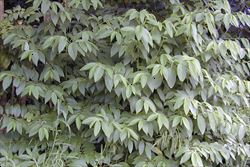
habit (Photo: Forest and Kim Starr, USGS)
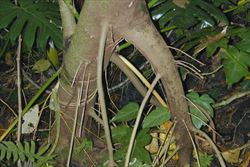
stilted stem bases (Photo: Forest and Kim Starr, USGS)

bamboo-like stems (Photo: Forest and Kim Starr, USGS)

leaves on slightly zig-zagging branches (Photo: Forest and Kim Starr, USGS)
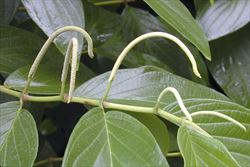
elongated and curved flower clusters (Photo: Forest and Kim Starr, USGS)

young plant (Photo: Forest and Kim Starr, USGS)
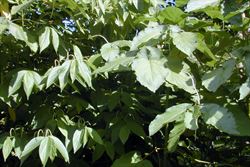
comparison of spiked pepper (Piper aduncum), left, and Mexican leaf pepper (Piper auritum), right (Photo: Forest and Kim Starr, USGS)
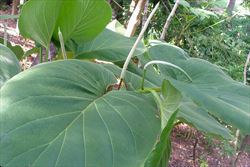
leaves and flower clusters of Mexican leaf pepper, Piper auritum (Photo: Sheldon Navie)
Scientific Name
Piper aduncum L.
Family
Piperaceae
Common Names
bamboo piper, cow's foot, false kava, false matico, jointwood, matico, matico pepper, piper, spiked pepper, stilt root piper
Origin
This species is native to southern Mexico, Central America (i.e. Belize, Costa Rica, El Salvador, Guatemala, Honduras, Nicaragua and Panama), the Caribbean and tropical South America (i.e. French Guiana, Guyana, Surinam, Venezuela, Brazil, Bolivia, Colombia, Ecuador and Peru).
Naturalised Distribution
Naturalised on Christmas Island.
Also naturalised in south-eastern Asia (e.g. Malaysia, Indonesia and Papua New Guinea), tropical Africa (e.g. Tanzania), south-eastern USA (i.e. southern Florida) and on several Pacific islands (e.g. Fiji, Hawaii and the Solomon Islands).
Notes
Spiked pepper (Piper aduncum) is a potential weed of disturbed rainforests, forest margins, coastal environs, roadsides, waterways, plantations and pastures in the tropical regions of Australia. This species is a serious environmental weed in other parts of the world and is expected to be invasive in the humid coastal regions of northern Australia. It is listed in the Global Invasive Species Database and in on the Northern Australia Quarantine Strategy (NAQS) list.

